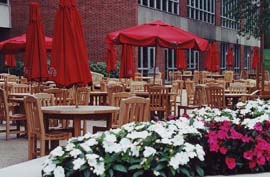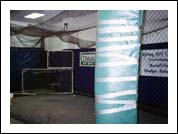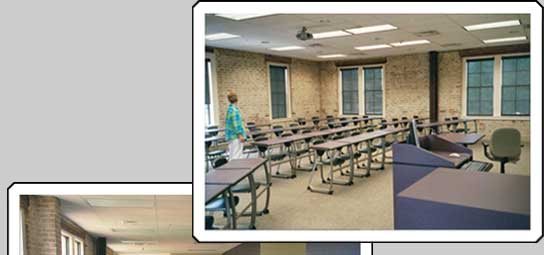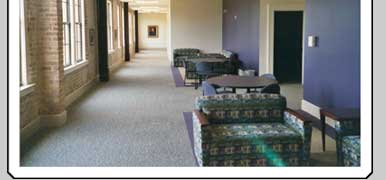Maintaining Vitality Institutions that do not purposefully grow and change wither and die. |
||||||
Perspectives examines the inevitability of change and how you can contribute to your institution's vitality. Real vitality goes beyond the superficiality of aesthetics. Mission and program are fundaments that are enhanced by balancing functional facilities with fiscal viability. Archaeologists examine buildings and their surrounds. So do first-time campus visitors, who read the environment for clues suggesting strengths and on-going liveliness. Everyone has heard the term ‘curb appeal’ used in recent times with particular regard to competition for enrollment (and retention) of students. Discerning prospective students, now called Millenials (and their hyper-involved parents), see more than the newly refreshed surfaces and furnishings in Old Main. Evidence of on-going activity, whether students are present or not, conveys volumes about institutional energy.
|
|
|||||
| Facility Renewal |
|||||||||||
| Campus plans rightfully focus on the big picture — accommodating enrollment growth, supporting new programmatic initiatives, enhancing an institution's image, resolving significant problems of access and vehicular management, or determining the highest and best use of newly acquired land.
Yet essential background routines that support campus operations, promote preservation of institutional heritage, and convey institutional values such as stewardship are important also. Include them in your campus plan as actions and describe them collectively as facility renewal — building reuse, program-driven renovation, and remediation of deferred maintenance — to ensure vitality at your institution. Building Reuse |
|||||||||||
|
Actions such as converting an early 20th century gym to a 21st century student center, transforming a library to an on-campus guest house, reconceiving an underutilized campus chapel for a range of new uses, or recovering an obsolete science building as a new humanities center are all examples of campus plan renovation initiatives. All of these are opportunities for the institution to revitalize core campus buildings to serve new functions in a manner sympathetic to campus plan and style. |
||||||||||
Program-Driven Renovation By incorporating these projects into the campus plan agenda, the institution links the programmatic to the operational while preserving campus heritage, an obvious fund-raising appeal. Remediation of Deferred Maintenance Historically, dollars for facility maintenance are among the hardest to allocate at levels sufficient to catch up and stay current as maintenance is a never-ending and mundane process, rather than a transformative, one-time event. Referring to these projects in the campus plan keeps the deferred maintenance issue before the board, the legislature, and on-campus decision-makers. More importantly, the stewardship involved in such projects is a critical value that responsible institutions should promote as it not only preserves institutional legacy, but makes budgeting more predictable, ensuring that your institution is not robbing Peter's essential maintenance program to support Paul's exciting and strategic new construction program. Keep all of these needs on the table to ensure your institution's entire facility inventory best reflects its intellectual and organizational vitality. |
|||||||||||
 George Mathey |
|
||||||||||
News ACUHO-I/APPA Spring Hill College DLC+A Speaking at DLC+A To Be Faculty at Integrated Planning Institute |
Student Impressions Choosing a college or university is often a mystical correspondence of the rational and the irrational — the emotional and the cool. A prospective student's decision making process is, at times, neither obvious to the intellect nor apparent to parents. It's like falling in love. So how does an institution influence a prospective student's impressions of the campus? The impression of the campus environment, buildings and land, is only one factor. Consider these others:
But students perceive the campus in a more complex and sophisticated way:
Still, one of the strongest — overlooked — influences affecting student impressions of a campus is the subtle, personal connection created by the student tour guide. How the guide feels about the campus and expresses that feeling will have a significant influence on the perspective student's perception of the institution. Do you want to have a significant impact on student perceptions? Do a better job of selecting and training your student tour guides.
|
||||||
Links Related Topics &
|
|||||||
© Copyright 2004 |
|||||||






